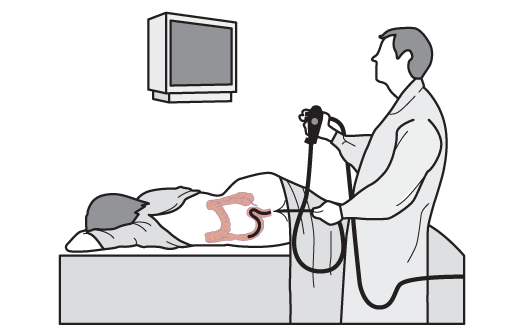Colonoscopy
Colonoscopy is an exam that allows the doctor to look inside the whole colon and rectum.
For this, a thin hollow flexible tube is passed through the entire colon. This tube, called colonoscope, has a light, and a camera on its end that feeds the images to a monitor.
During the examination, the doctor searches for any abnormal changes, in particular polyps or cancer. Small amounts of air are blown through the colonoscope into the colon to distend it improving visibility.

Colonoscopy is the best screening exam for polyps and/or cancer detection
If a polyp is detected, it is removed during colonoscopy using special instruments that pass through the hollow space of the colonoscope. There is a small risk of bowel perforation.
Colonoscopy reduces the chance of colorectal cancer in about 80%.
Talk to your doctor about the procedure. Be sure to use professionals trained in the technique.


